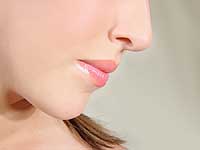Rhinoplasty (Nose Job):
Information and Resources

The nose is the central part of the human face, and is thus one of the first features everyone will see. Many people with high, wide bridges, drooping tips and large nostrils are highly self-conscious about the way their nose looks and how others perceive them because of it. A distinctive nose can lend interest and even beauty to a face, many are so upset about the appearance of their nose that they are constantly worried about what people think of it. If you are one of these people, the benefits of the cosmetic procedure rhinoplasty, commonly known as a nose job, are worth the cost of surgery.
It is good to thoroughly discuss what you want with your cosmetic surgeon. He or she will know what results are possible and what alterations will look the best on the individual based upon the way a patientís nasal bones and cartilage are formed, the shape of the face, thickness of skin and age.
The cosmetic surgeon can anesthetize patients in two ways. First, the patient can have general anesthesia, under which the patient will sleep through the entire procedure. Second, the patient can take a sedative to relax in addition to local anesthesia which will numb the nose and surrounding areas that will be affected by surgery.
During rhinoplasty surgery, incisions are made either inside the nostrils or across the septum that divides the nostrils. Scars from incisions inside the nostrils will, of course, be invisible, but those incisions made on the nostrils (in cases where wide nostrils are fixed by cutting out a section of the nostril at the base) may be visible but should be well hidden by the natural crease where the nose meets the face. After the incision is made, the skin of the nose is then lifted back so the nose shape can be altered. Depending upon the desired look of the nose, different procedures will be done. The bridge of the nose can be straightened by shaving off the bone with a chisel. Then the bridge can be narrowed by bringing the nasal bones closer together. For noses that droop down at the tip, cartilage from the end of the nose can be trimmed to improve the angle between the nose and upper lip.
Recovery from rhinoplasty can be unpleasant, as patients will have to wear a splint and can expect minor swelling and bruising of the face. Also, they will have to keep their head elevated when they sleep. Also, people who wear glasses (and donít have contact lenses) will have to tape their glasses to their face so that the glasses donít rest on the nose for several weeks. However, after these initial inconveniences subside, people are glad that they decided to enhance their appearance through rhinoplasty and have improved self-image and self-confidence.
Want more information about rhinoplasty cosmetic surgery? Find a qualified Cosmetic Surgeon in your area at http://www.sleepingswan.com.
|